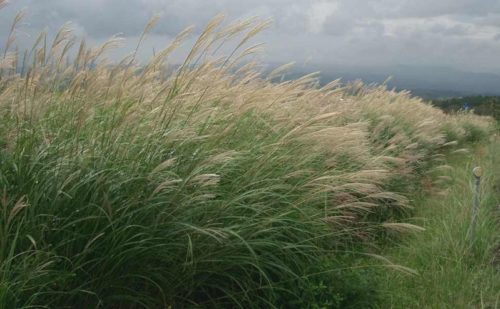Eulalia belongs to the ornamental gras
Also known as:
Chinese silver grass
Do not confuse with:
Giant miscanthus (Miscanthus x giganteus)
You are viewing the mobile-adapted version of the page.
The one for tablets, laptop and desktop also provides general information, such as origin, toxicity and cultivation.
Eulalia – (Miscanthus sinensis), belongs to the ornamental gras
Eulalia blooms with spikes from July through September. After flowering, the spikes dry out.
Eulalia likes a spot in full sun in well-drained soil. This soil should not dry out. Eulalia does not grow rampant, although the pollen does get bigger and bigger.
Because eulalia is native to dry regions, this ornamental grass is sensitive to excess water in winter. Tying up the tussock prevents rainwater from seeping into the heart of the plant and causing root rot.
After the winter, in early spring before the plant sprouts, prune back eulalia to ten cm around the tussock. Fertilize regularly (spring).
Bugs
Does not apply.
Fungi & diseases
Stems and culms weaken, soften and bend over: excess moisture causes root rot or Gray mold (Bo
Other
Does not apply.

